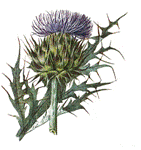Papers in the Biological Sciences

Svata M. Louda Publications
Document Type
Article
Date of this Version
1989
Abstract
The biology of Scaptomyza nigrita on its host plant, a native crucifer (Bittercress) in the Rocky Mountains, is described. Development of each stage in the life history was studied both in the field and in the laboratory. This is the first documentation of a host for S. nigrita. We examined the activity of adult flies in two adjacent habitats, sun and adjacent willow shade. Adult flies were more abundant on bittercress plants in sun-exposed versus in shaded areas, and were most active from mid-day to late afternoon. Female flies were significantly larger than male flies, but there were no differences in size of adults between the two habitats. Larval damage to bittercress is generally much greater on plants in sunny areas than on those in the shade, possibly due to the increased activity of ovipositing flies in sun-exposed areas.


Comments
Published in JOURNAL OF THE KANSAS ENTOMOLOGICAL SOCIETY 62(1), 1989, pp. 1-10.